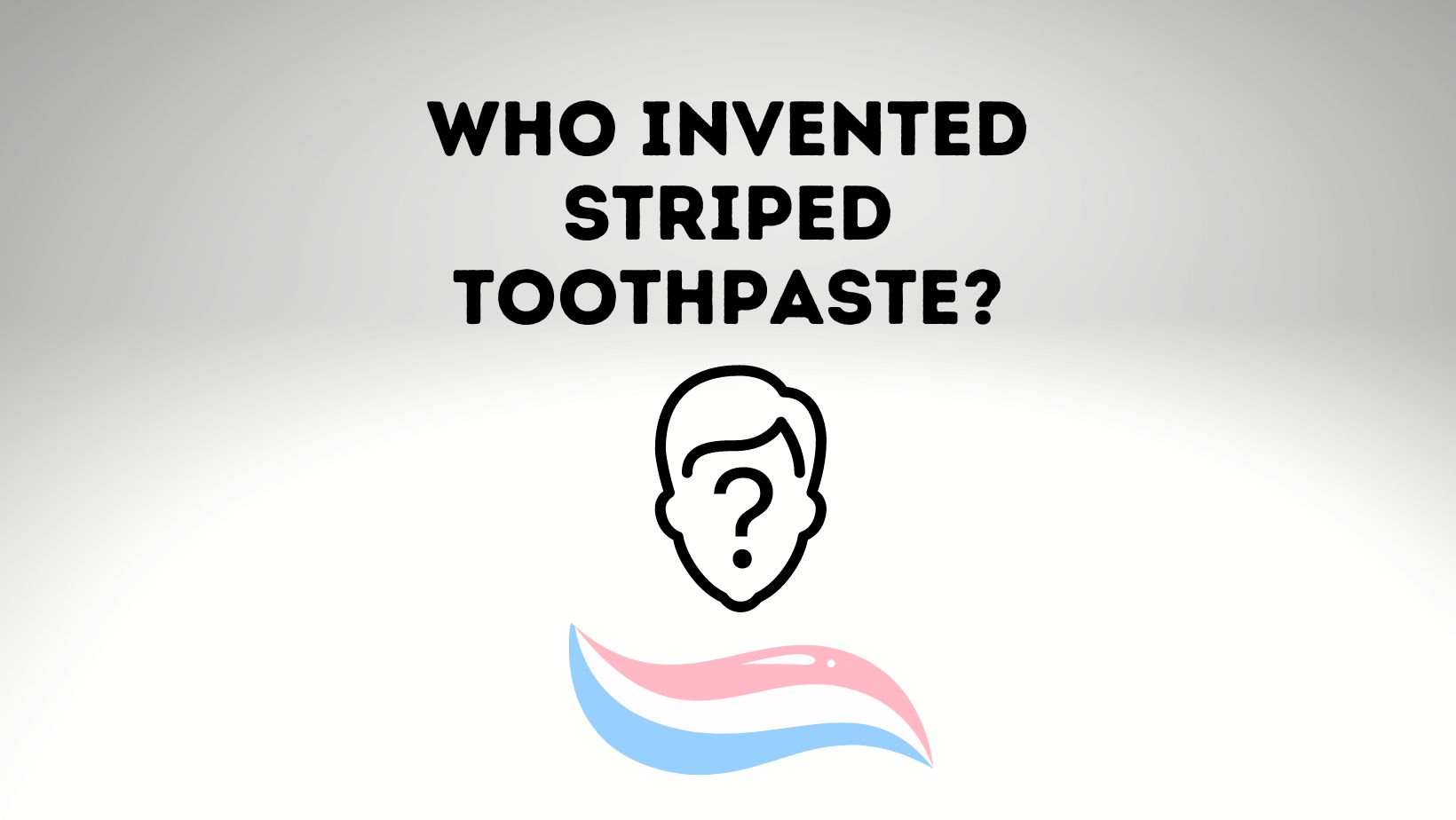
We may not even realize it, but Toothpaste is an essential part of our daily lives. Do you remember the age you started using Toothpaste? Well, probably not, as we all are doing it for god knows when.
Toothpaste is a vital part of our dental and oral health care schedule, but have you ever wondered where it came from? Do you know who invented Striped Toothpaste? Or do you have any idea about the inventor of the regular white Toothpaste? The Toothpaste we are using today isn’t here since ancient civilizations, and it was a few centuries back when someone invented it just like that. Especially Striped Toothpaste is definitely a recent development in the history of dental care and oral hygiene products.
When we dug deeper into the history, Striped and Regular Toothpaste have many data backups. The color and texture of Toothpaste, how strips were added, when Fluoride was brought into charge, and a lot more.
Join us through this article and explore the history and invention of striped Toothpaste. We will also delve into who brought the regular white Toothpaste into the picture. Make sure you stick to the end to get the most about it.
The invention of Striped Toothpaste
Do you have Striped Toothpaste in your bathroom? Ever wondered where the Striped Toothpaste came from?
Striped Toothpaste wasn’t always a thing. In fact, is it a relatively recent development that made a revolution in the dental care industry?
A team of scientists and engineers was set to create a different set of Toothpaste during the early 1990s. The idea was to create a toothpaste that was practically and visually appealing. It was in 1955 when Leonard Marraffino invented the Striped Toothpaste.
The inventor sold its patent to Unilver, who later marketed the novelty in the 1960s under a brand name. Before striped Toothpaste came to light, Toothpaste was all about being white and of a single texture. Back then, it wasn’t the most appropriate formulation, which led to conflicting results and a lot of wastage.
Striped Toothpaste achieved 8% of the market share during its second year. It was initially a very successful idea and therefore took the front seat in terms of getting popularity. Striped Toothpaste may appear like a mini invention, but it made a large impact on the way people use to brush their teeth.
The concept of adding two or more stripes into Toothpaste was very simple: Every strip would contain different kinds of Toothpaste for purposes like whitening, cleaning, freshening breath, and more.
The invention of Normal Toothpaste
A tube of regular white Toothpaste is an everyday essential for a million of people around the world. Earlier, when actual Toothpaste wasn’t a thing, people used charcoal, crushed bones, and even chalk to clean their teeth. Different civilizations had different teeth cleaning methods until the 1800s when an ‘actual toothpaste’ was invented.
There are several speculations about who invented the first regular Toothpaste. Some claims suggest that it was a dentist named Peabody who added soap to dental paste in 1824. However, according to several floating claims that are, in fact, taken very seriously, it was Dr. Washington Sheffield, an American dentist, who brought the regular white Toothpaste into the picture.
Dr. Washington Sheffield, in 1892 created a paste that included soap and chalk and cleaned teeth. The said Toothpaste was invented way before, but it wasn’t widely available till the 1890s. It was after 1892 that the mass production and sale of Toothpaste started across different parts of the world. Earlier, a very limited commercial toothpaste was available around that, too, inside a jar.
However, Sheffield thought it was unhygienic for people to dip their brush time and again into the jar, and thereafter he brought the first Toothpaste in a collapsible tube. Sheffield was inspired by the tube paint artists used.
Different time zones of Toothpaste and how it changed over decades
The first widely used Toothpaste was introduced by a New York dentist named Dr. Gerald M. Lawrence, and it was known as Kolynos. It became quickly popular and was highly effective with its results.
Later, Colgate made Toothpaste more easily available around in tubes. It, in fact, added Fluoride into Toothpaste and made their products even more popular. Soon enough, the toothpaste market became strong, and today, we have regular white Toothpaste, striped Toothpaste, vegan Toothpaste, herbal Toothpaste, and a range of other varieties as well.
What was the first Toothpaste with stripes?
Aquafresh was the first Toothpaste with stripes, and Unilever invented it. The first striped Toothpaste initially had blue and white stripes, and its key focus was fresh breath and fighting tooth decay. The idea of a distinctive striped design was meant to make Toothpaste appealing to consumers and also a more effective dental care product than what the market already had.
Back then, Aquafresh was the first brand that introduced freshness as a major benefit of its toothpaste product. The brand launched the first striped Toothpaste with so much appeal and an all-new style of advertisement. Its advertisement ‘Ocean of Freshness’ was entirely instrumental, and it helped Aquafresh quickly establish itself in the marketplace.
How is striped Toothpaste always striped?
There’s science and a unique manufacturing process behind how Striped Toothpaste always remains striped.
Strips of different colors and flavors in Toothpaste are layered within a toothpaste tube in a specific order. The tube is later sealed and packaged. The toothpaste manufacturing unit basically consists of multiple tanks that are filled with differently colored toothpaste formulas. As the layer of different toothpaste formulas is pumped through a machine, it makes a strip pattern inside the toothpaste tube.
It is pumped in such a manner that every time someone squeezes out Toothpaste, the formulation will come out in the exact same striped manner. It never exactly mixes along inside the Toothpaste, despite how many times one pushes, pumps, and squeezes. Manufacturing striped Toothpaste is undoubtedly more complex than that regular Toothpaste.
When was Fluoride introduced into Toothpaste?
It was back in 1955 when Procter & Gamble introduced a toothpaste with Fluoride known as Crest. The Toothpaste was launched with the promise of preventing tooth decay. As Fluoride was added to Toothpaste, a significant development in oral hygiene and dental care was reported.
Fluoride, in fact, made teeth more resistant to decay and strengthened tooth enamel. Since then, Fluoride has been a key ingredient in a variety of Toothpaste, and even the American Dental Association marks it as an essential compound for better dental health.
Wrapping up…
That was all for the invention of Normal and Striped Toothpaste. While the normal white Toothpaste was doing its job, Striped Toothpaste was introduced for more efficiency. The result was better, and Striped Toothpaste gained a huge impact in the marketplace, much of which is still present around. However, over the years, Toothpaste has evolved a lot with its texture, ingredients, colors, flavors, and effectiveness. And while we move forward with time, more changes are yet to come.

Hi, This is Lyn, I suffer from dental sensitivity for a very long time. PowerToothpaste.com is where I share my views of various toothpaste brands, along with tips on how to use toothpaste and what to look for when purchasing.
